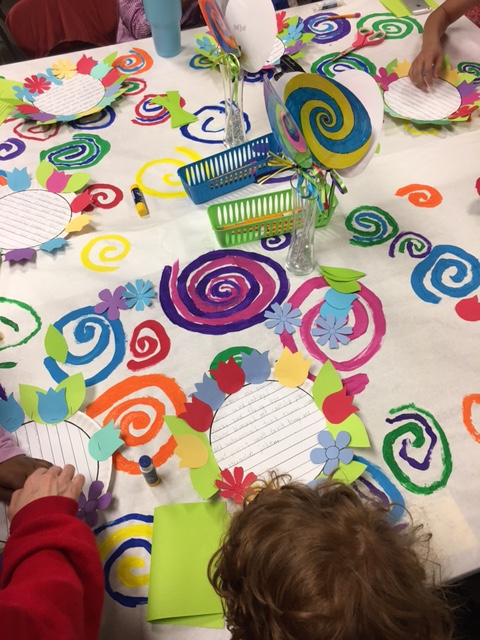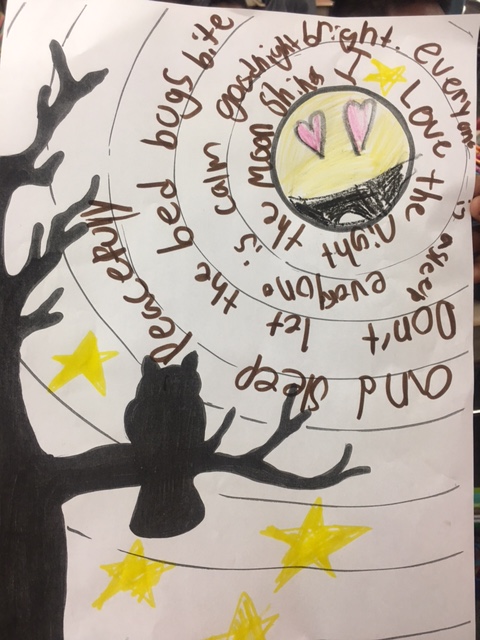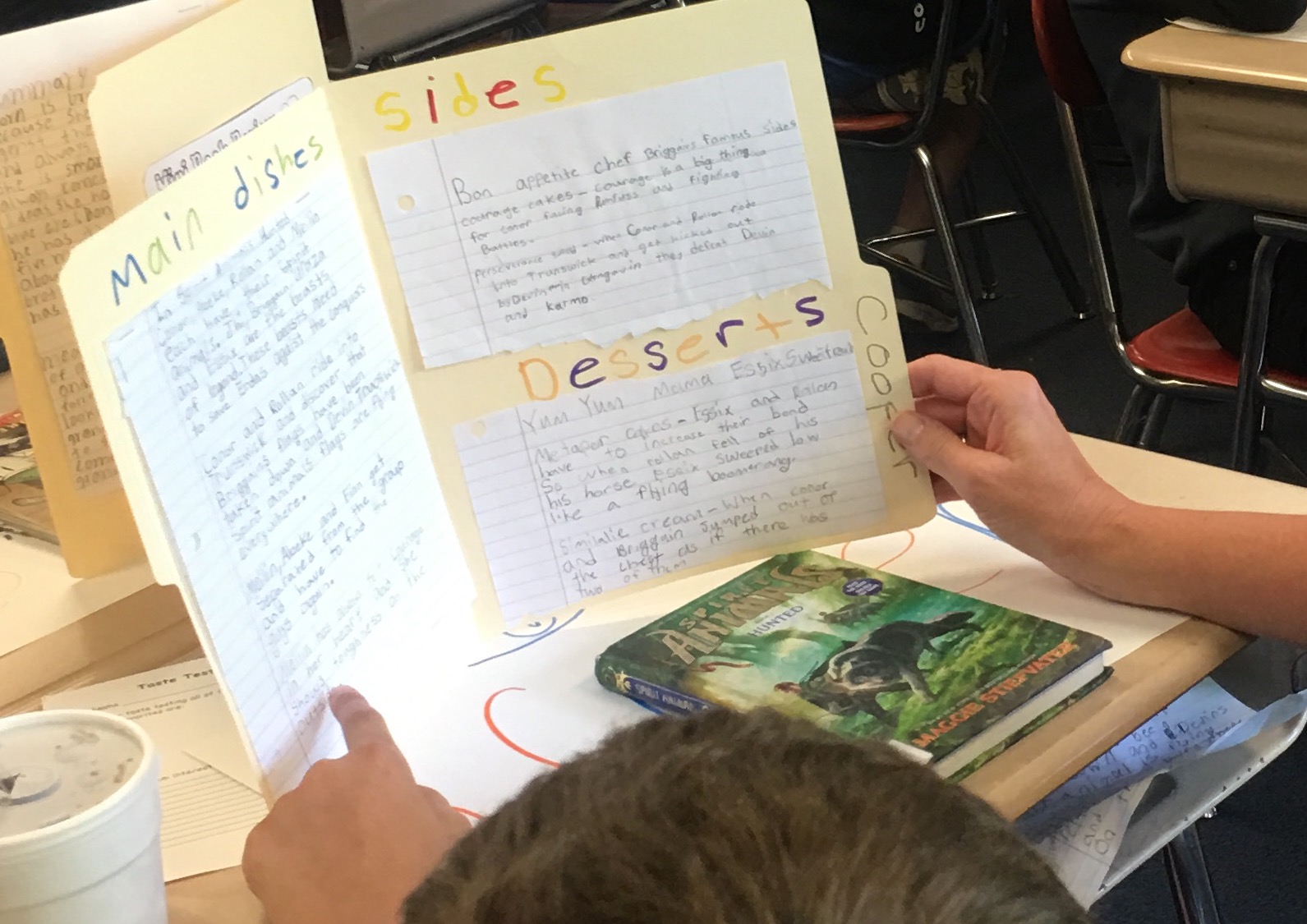Every year, my school hosts Literacy Lunch.
It is a time for families to come share in the love of reading, writing, and learning in classrooms, followed by a meal together in our cafeteria.
Literacy Lunch has sometimes been a vehicle for explaining English Language Arts curriculum, and shifts in standards, to parents. Mostly it’s a time for students and their families to collaborate on literacy activities. We’ve had poetry slams, writing cafés, and a “Step Write Up” carnival. We’ve invited families to SWiRL (speak, write, read, listen) and we’ve gone “wild” about reading (with the school decorated like a rainforest).
Even though it’s hosted in the middle of the day, Literacy Lunch remains one of our school’s best-attended events. Three days are designated: One for kindergarten and first grade, one for second and third, one for fourth and fifth. Some families come all three days to spend time with their children in different grade levels.
The comment we receive most often from parents: Thank you for this time with my child.
It tugs on the heartstrings, for a parent to tell you this.
When it came time to think of a theme for Literacy Lunch this year, part of my mind kept latching onto the idea of celebrating families themselves. They are, after all, the fabric of our school community, the thing that makes it unique. They are our greatest resource.
Then, in February, Two Writing Teachers ran a blog series on “Teaching Writing with a Social Justice Lens.” Co-author Kelsey Corter penned “A School Can Be the Change”, a breathtaking post on identity, culture, heritage, power, action, and the vital importance of honoring each other by sharing our stories. It was based on her school’s work and the book Being the Change: Lessons and Strategies to Teach Social Comprehension by Sara K. Ahmed.
I read these introductory lines of Kelsey’s over and over:
More than something we do, school can be the place where literacy is a way of living; a means for understanding the world and our place in it, that which shapes perceptions and molds identities.
The words turned round and round in my head:
Where literacy is a way of living
Literacy . . . living
—Living literacy.
“Well, that’s it,” I announced to my colleagues. “That’s my vote for the theme of this year’s Literacy Lunch.”
For, in truth, while the children are growing as readers and writers, their stories, all of our stories, are unfolding each day that we live; our families are a fundamental part of that. Every one is unique, every one valuable.
And so it was agreed upon, and the children got to work on Living Literacy: Celebrating Me in Pictures and Words.
It began with them tracing their hands to make flowers, one for each homeroom—a whole garden of beautiful, diverse flowers.
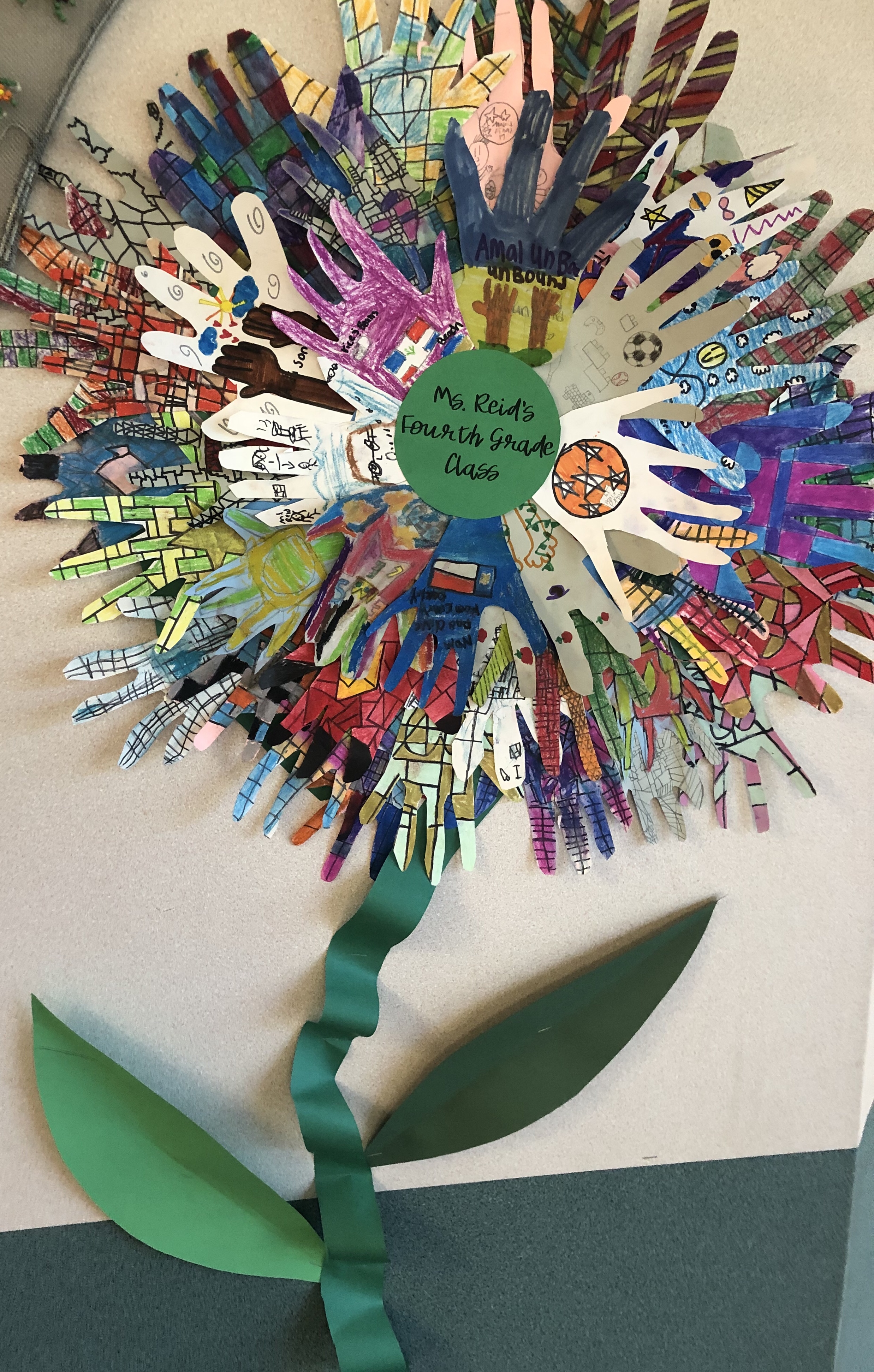
In our lobby and cafeteria, every homeroom was represented by a flower made from students’ traced and decorated hands. Many students artistically conveyed their personal interests – such as hobbies or a favorite book, like Amal Unbound, seen here. Some students across grade levels decorated their hands with flags from their native countries.
Teachers and grade levels planned identity-related activities for students to share with families:
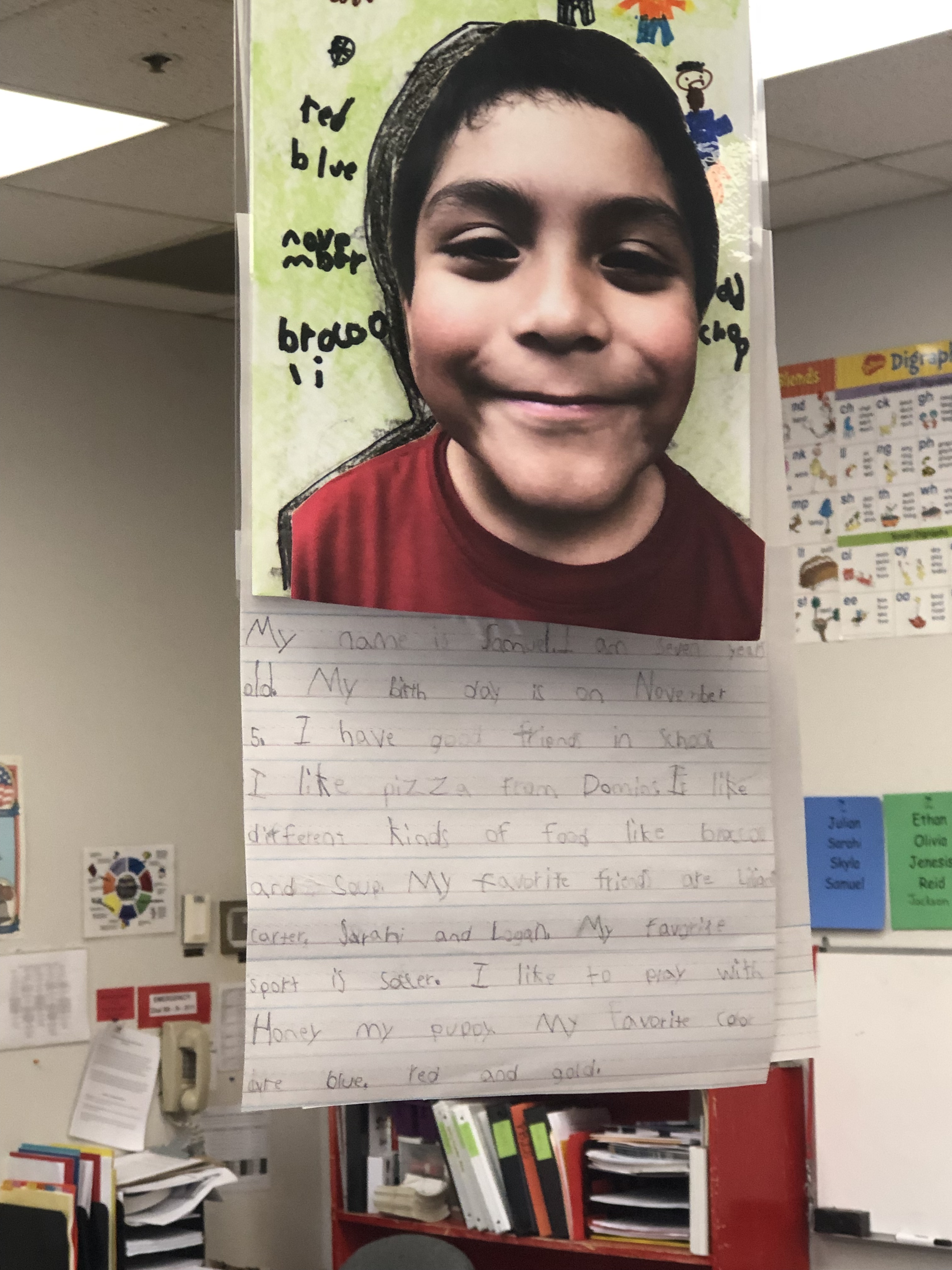
Student bios with 3D photos hang from the ceiling of a first-grade classroom.
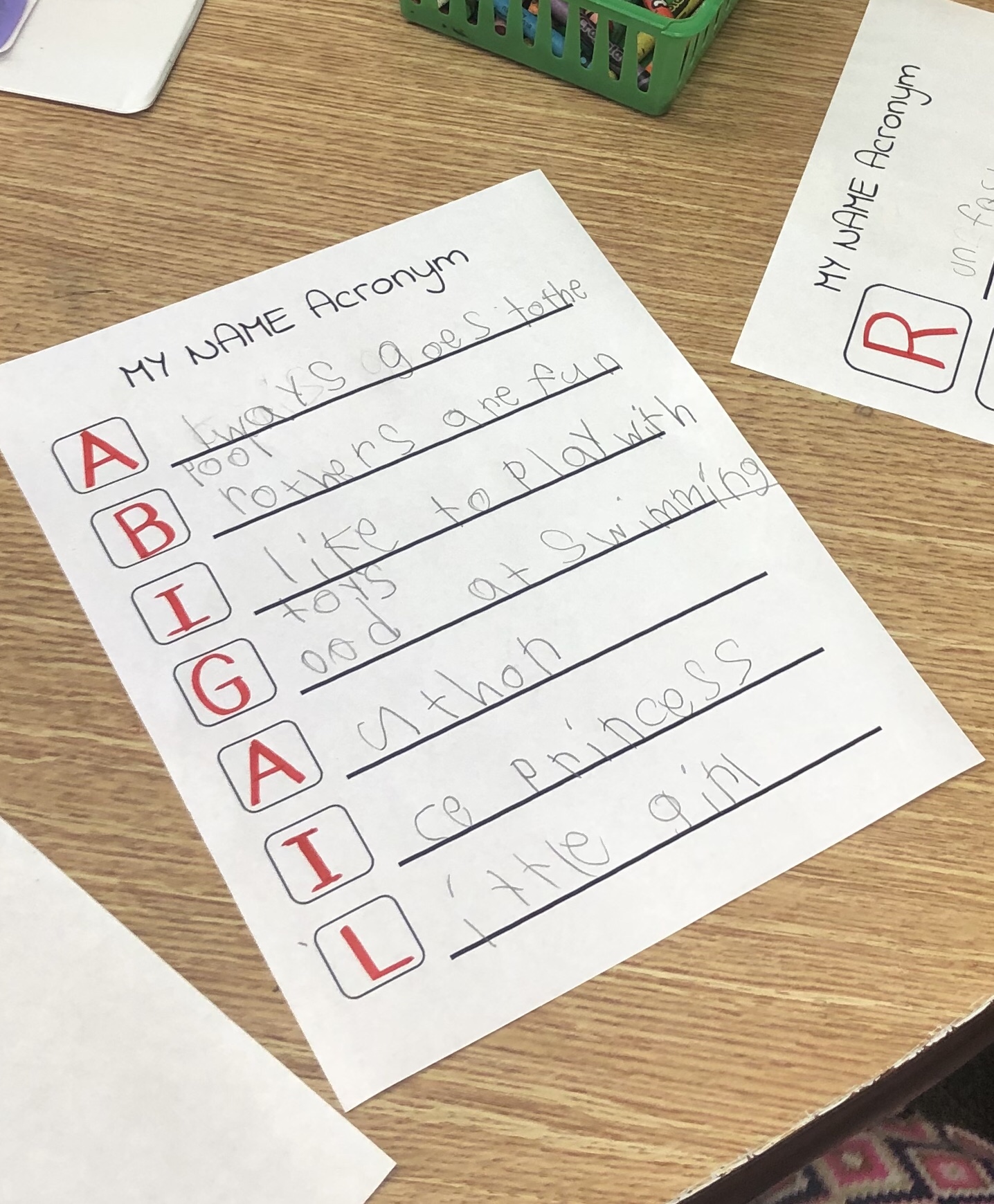
Many families helped compose student name acronyms.

In an “All About Me” book, a first grader describes herself.
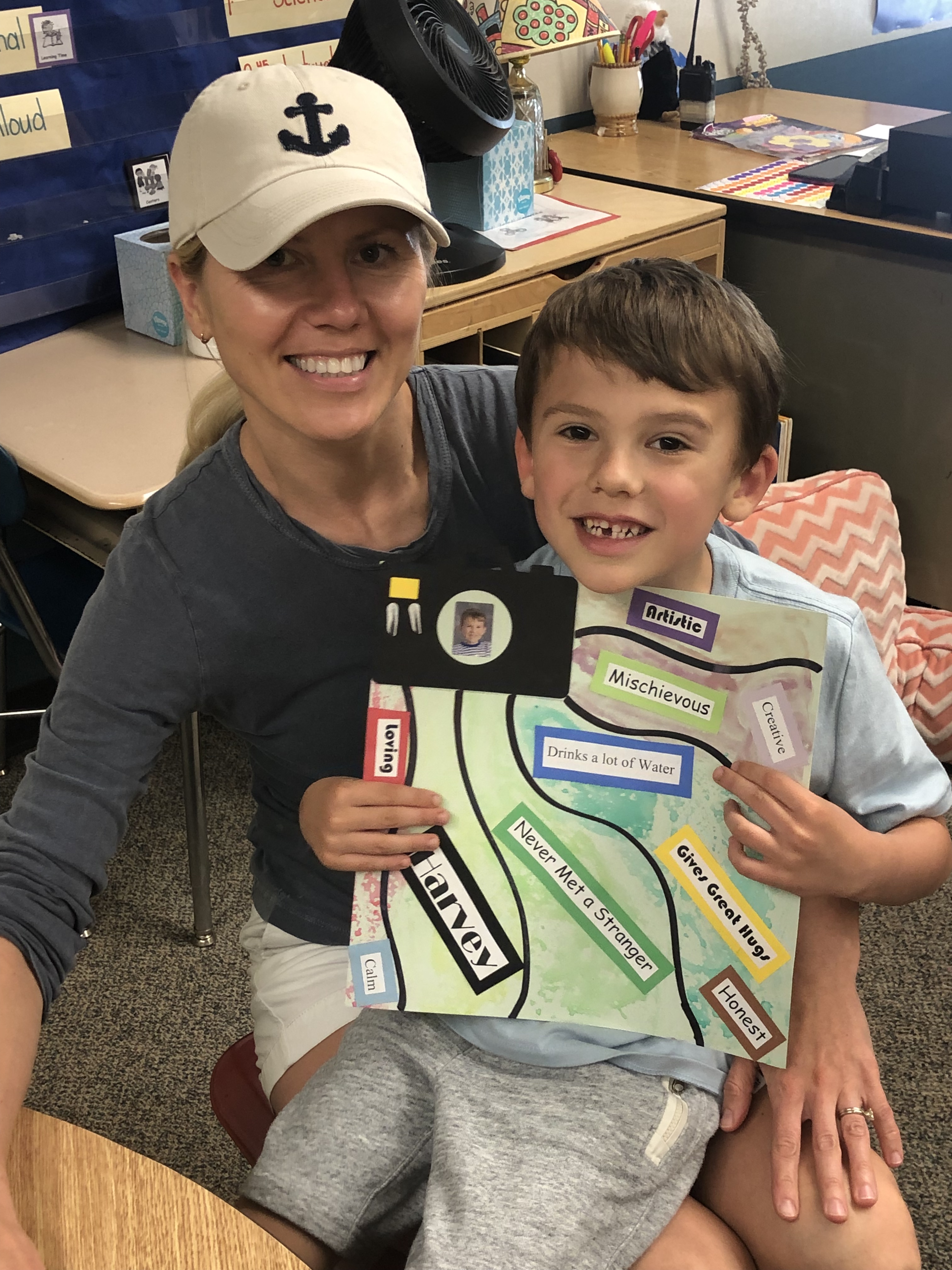
A kindergarten class asked parents, teachers, and peers for words to describe students. They created camera snapshot posters for a “Picture Me Successful” display (“Drinks a lot of water” may be my favorite descriptor of all! Talk about being observers!).
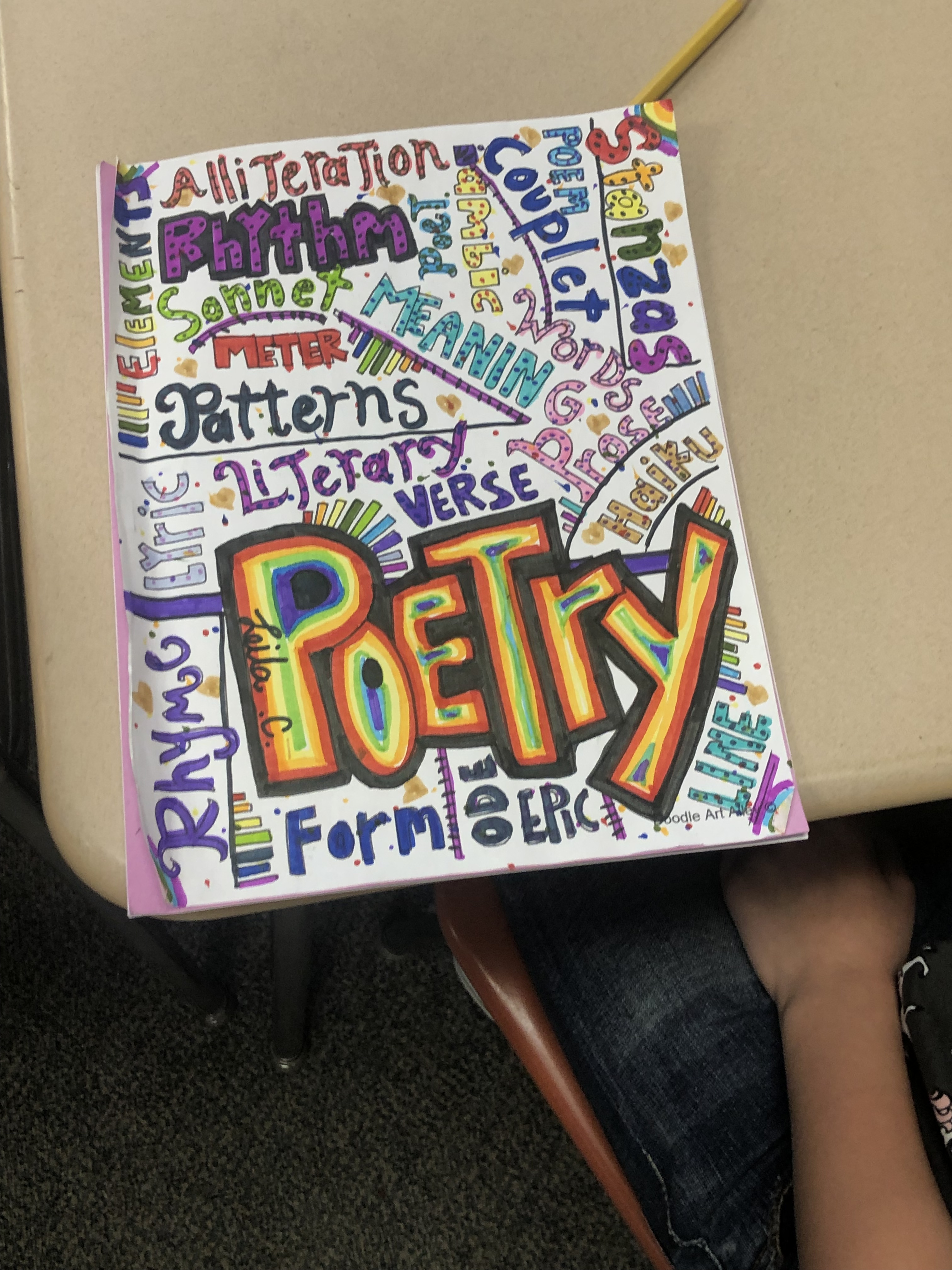
In third grade, students made booklets of various types of poems and collaborated with families in writing some.

One first grade class published a book of their animal research, with a back section recounting highlights of their year together. These books were presented to families at Literacy Lunch.
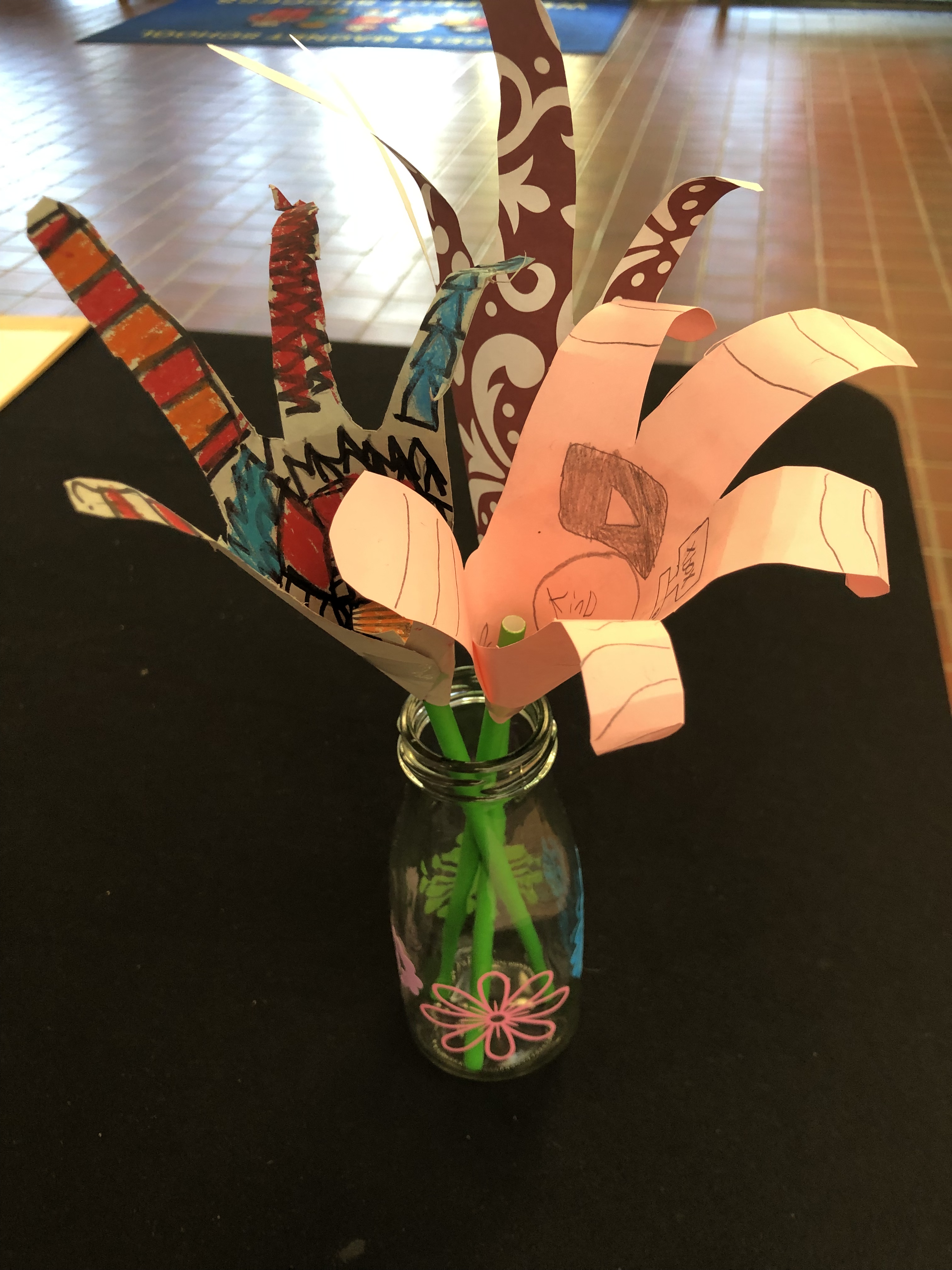
Even our tabletop flowers in the lobby and cafeteria were handmade by students.
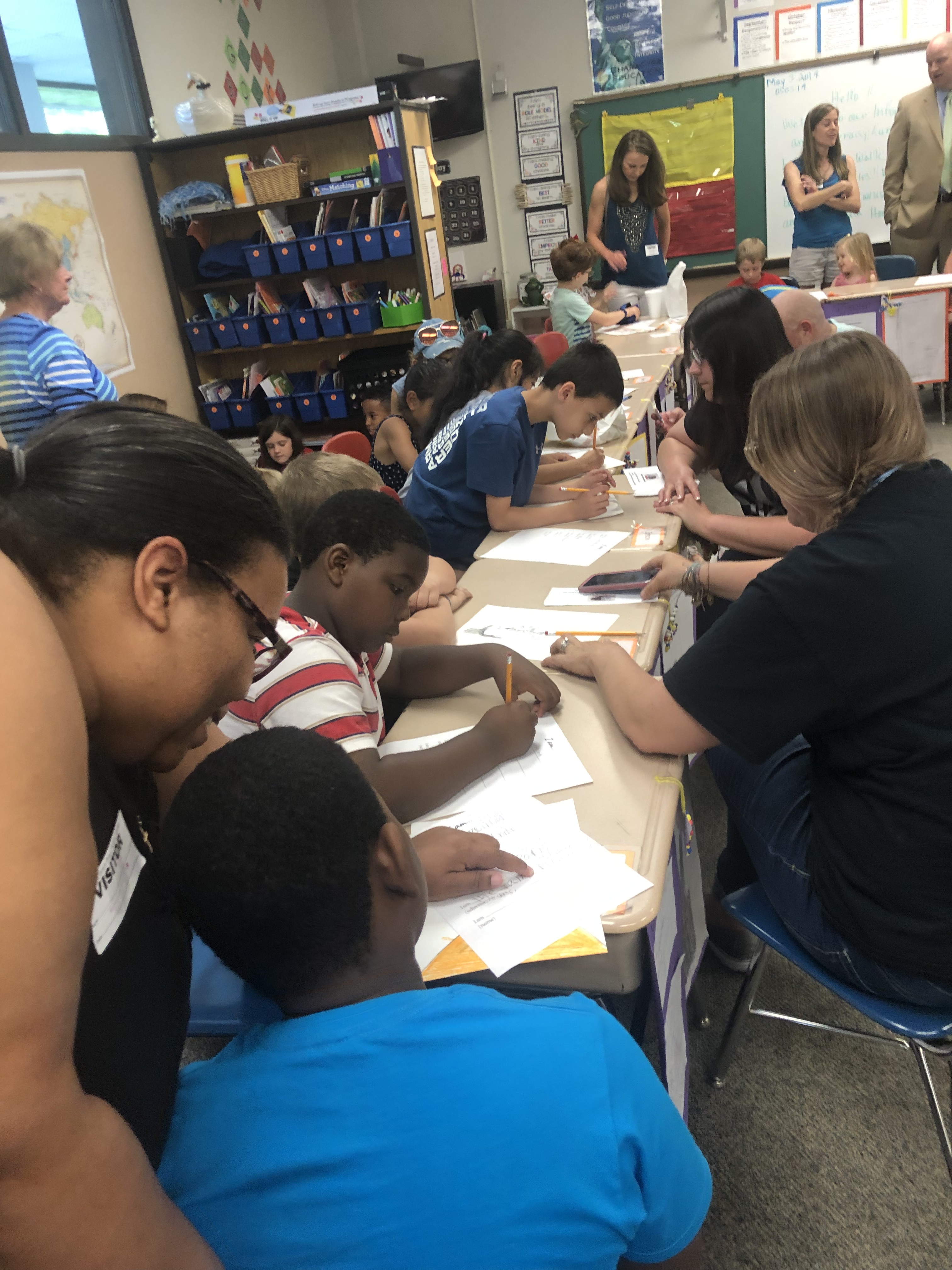
Second grade families collaborating on “I Am From” poems.
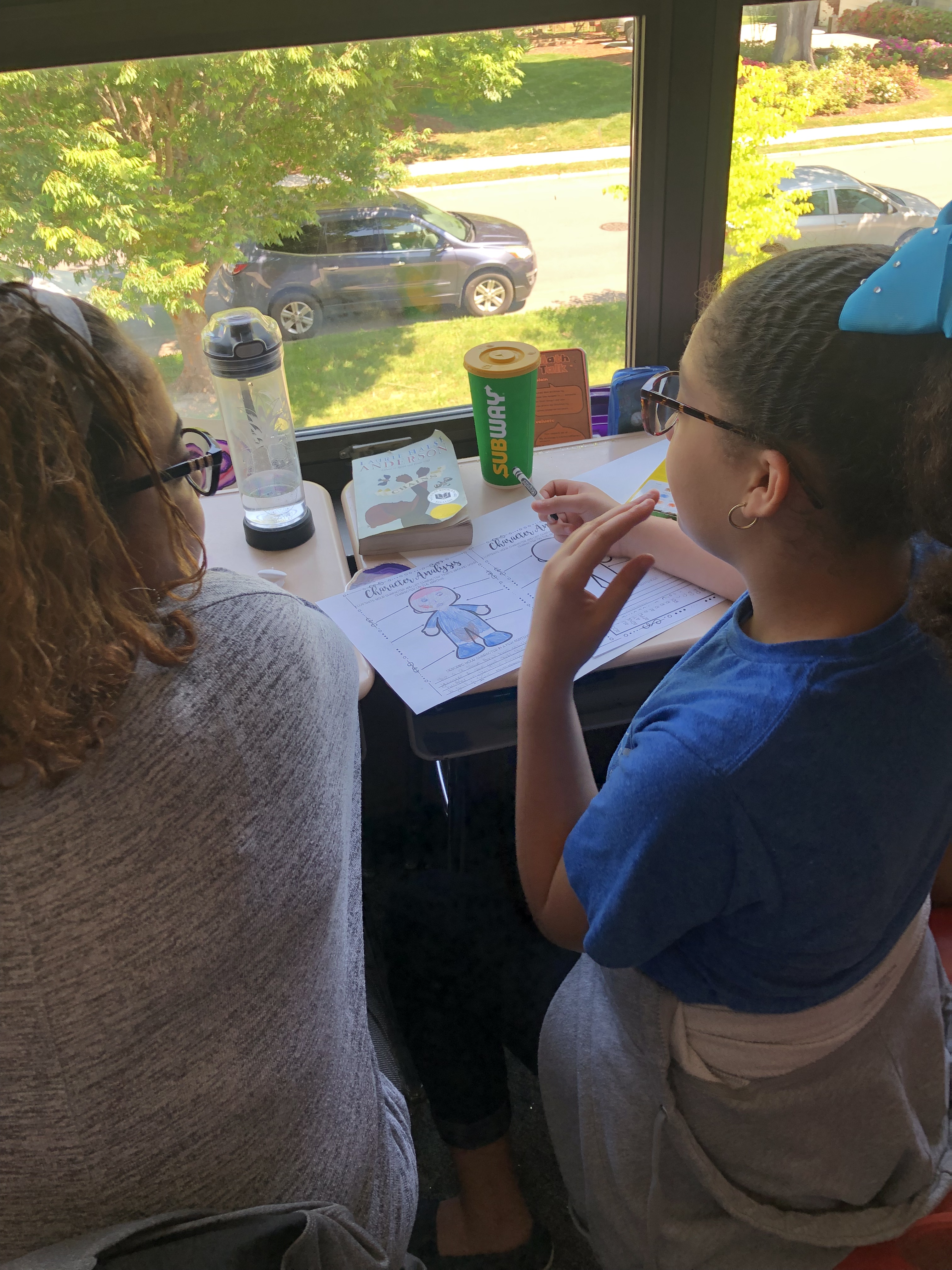
Fourth grade families collaborated on a “Books are windows and mirrors” activity – analyzing book characters, seeing others, seeing self.
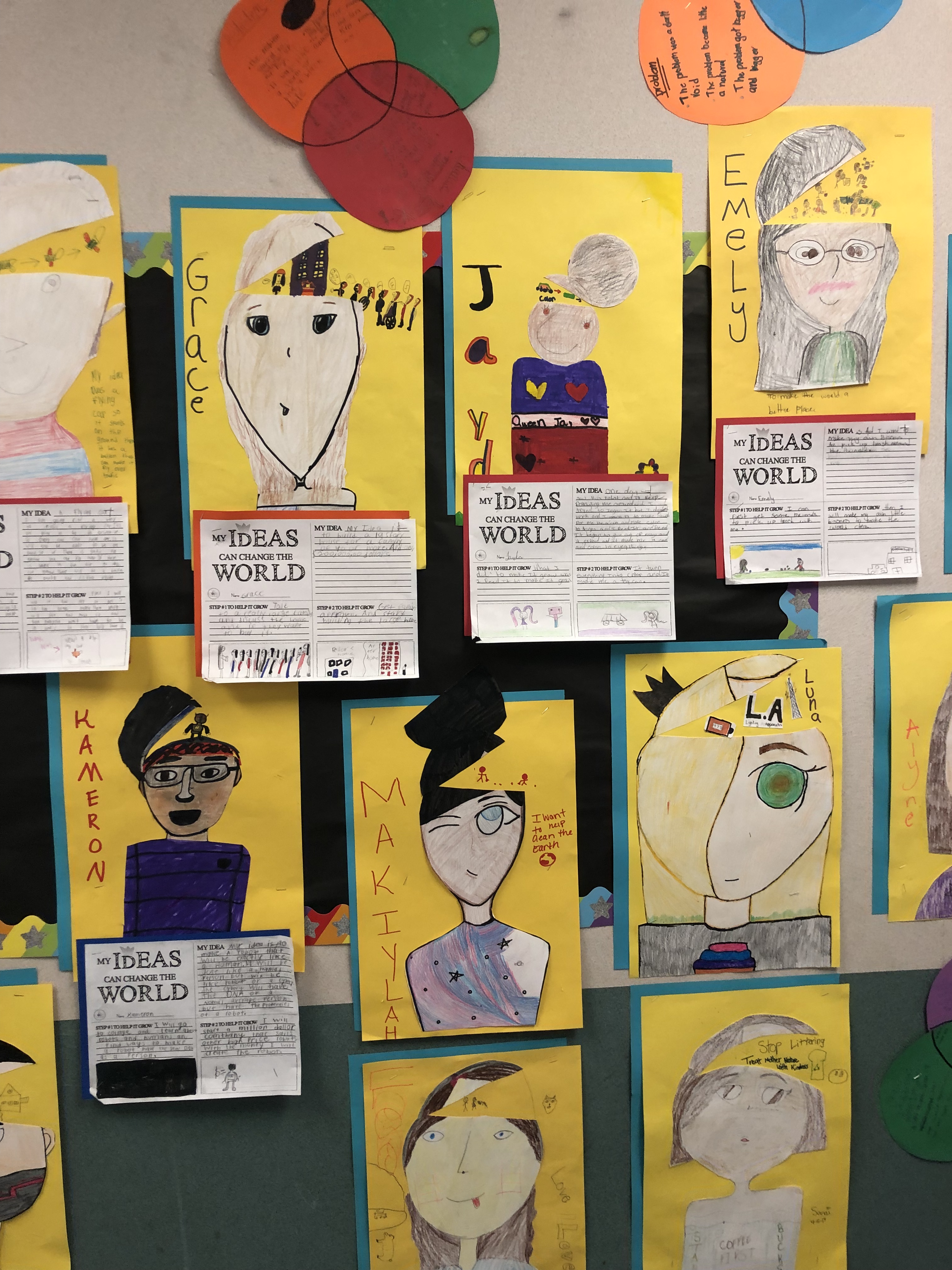
Fourth grade’s hallway display: “My ideas can change the world.”
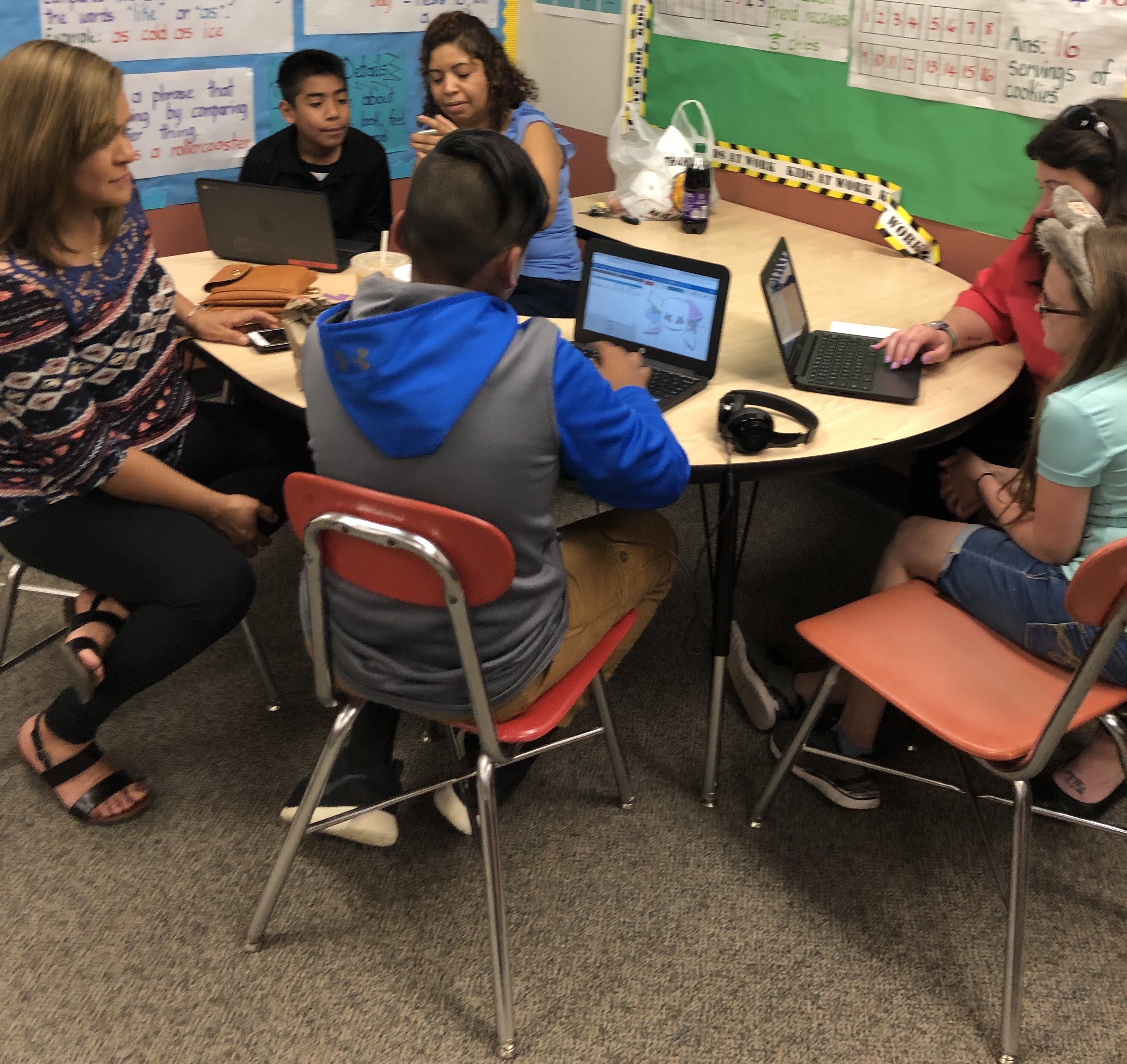
Fifth graders show families how to create name/identity word clouds in new Chromebooks.
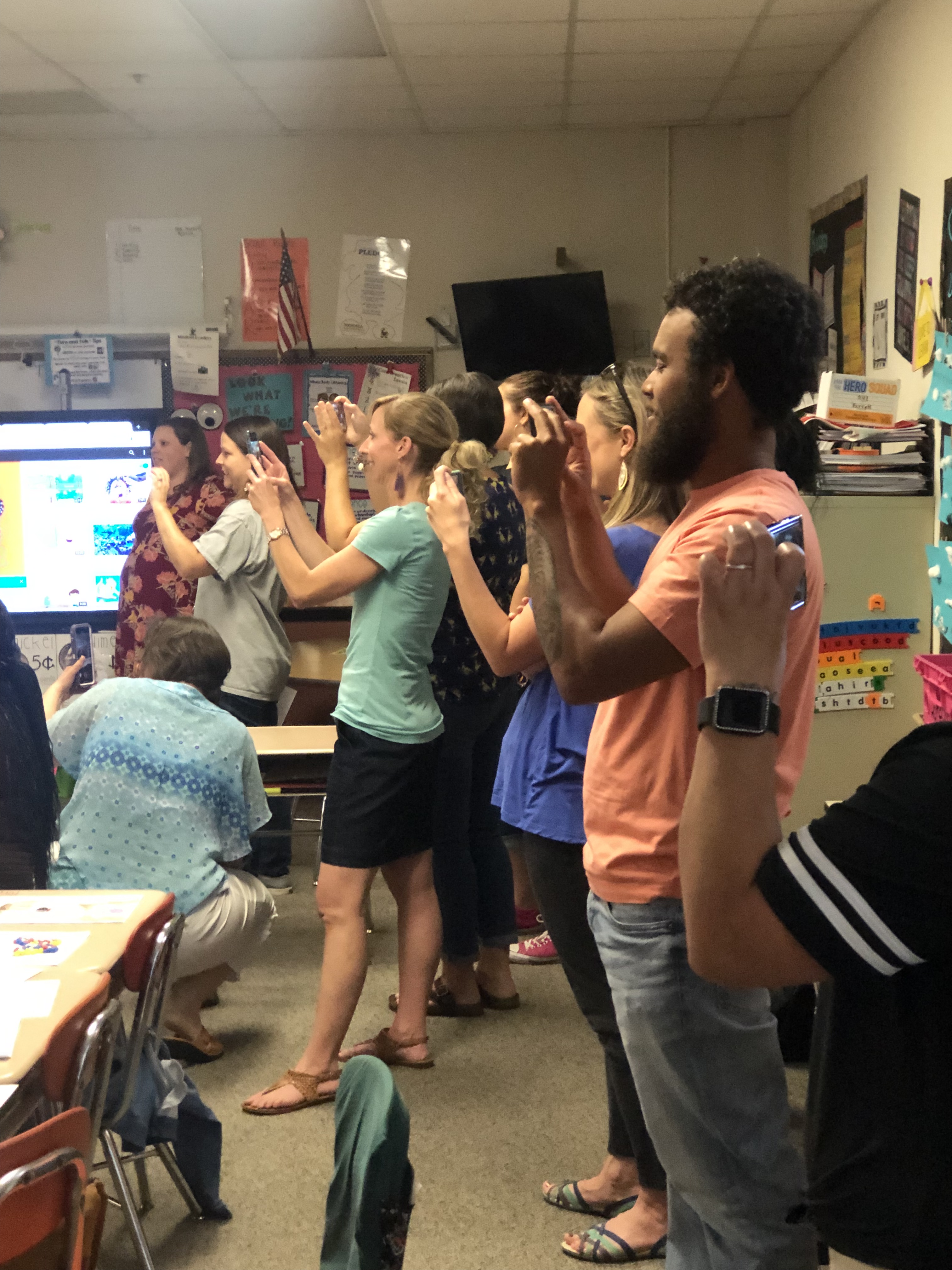
This photo, to me, captures the “Living Literacy” theme almost more than others: Parents recording second graders as they perform a song and dance demonstrating their learning from the study of butterfly life cycles (they also integrated math and visual art). I look at this and I think: WE are living literacy.
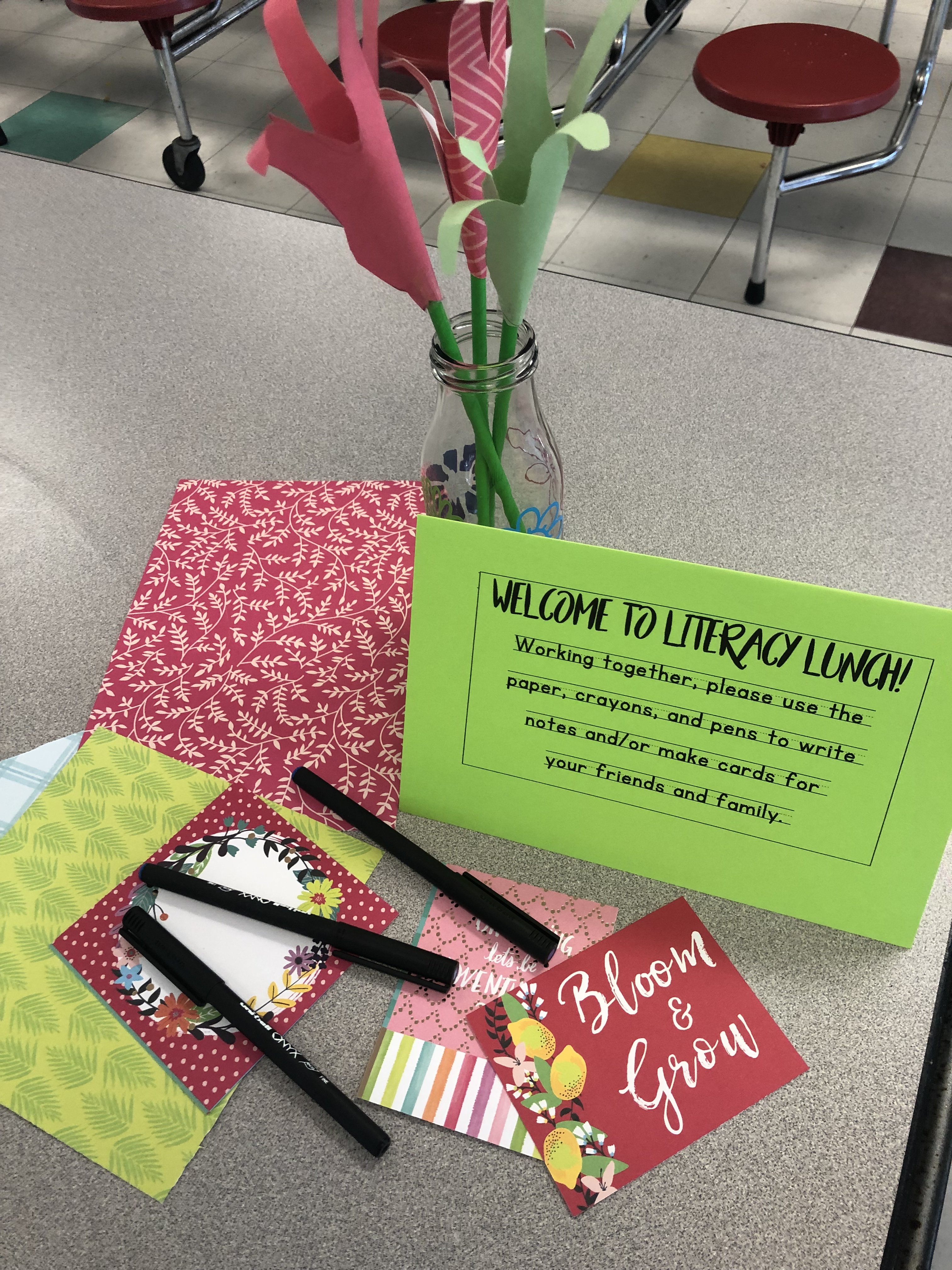
At tables in the cafeteria, families were encouraged to write notes to each other.
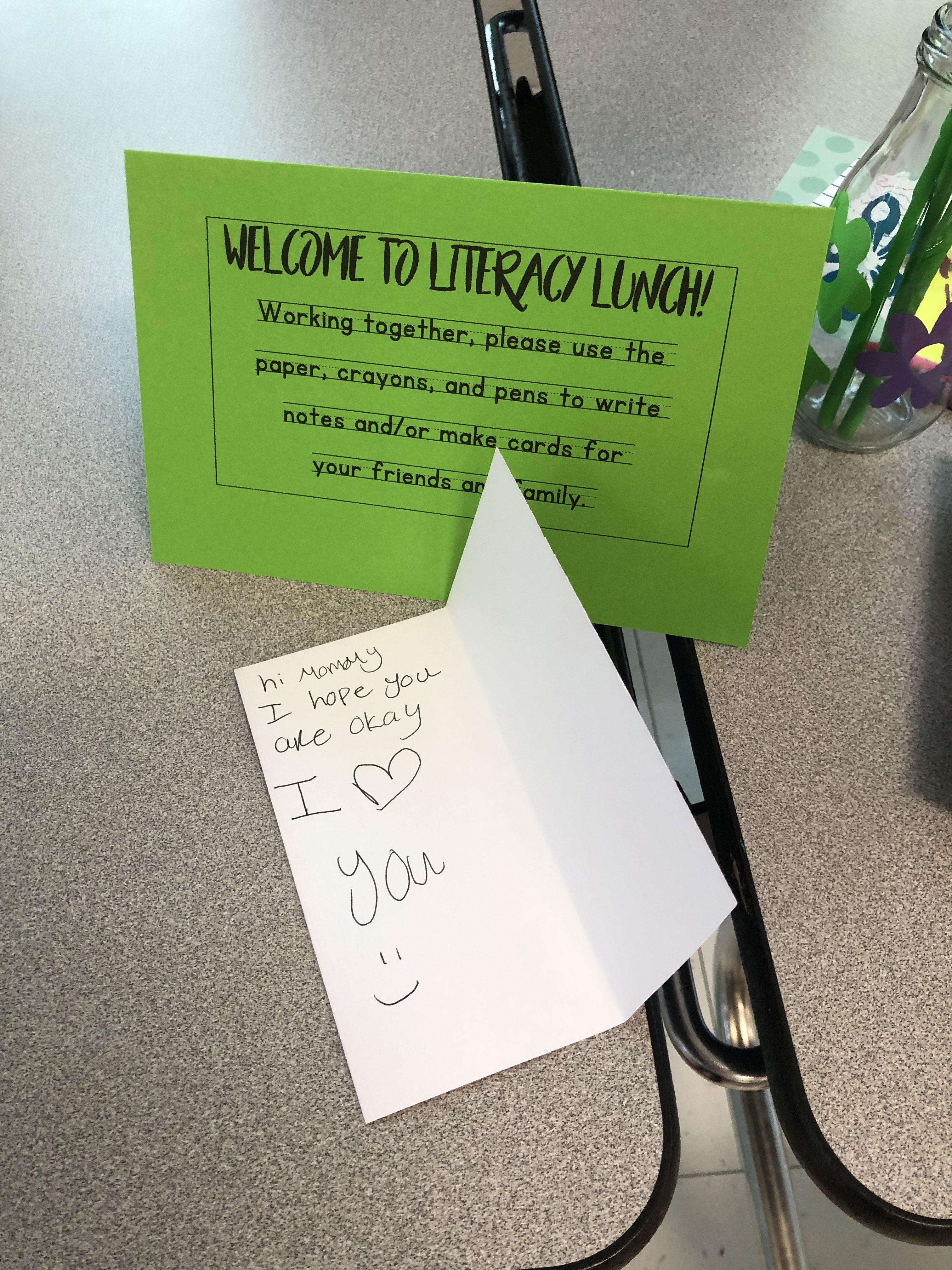
We write when it’s meaningful to us (I hope Mommy is okay, too).
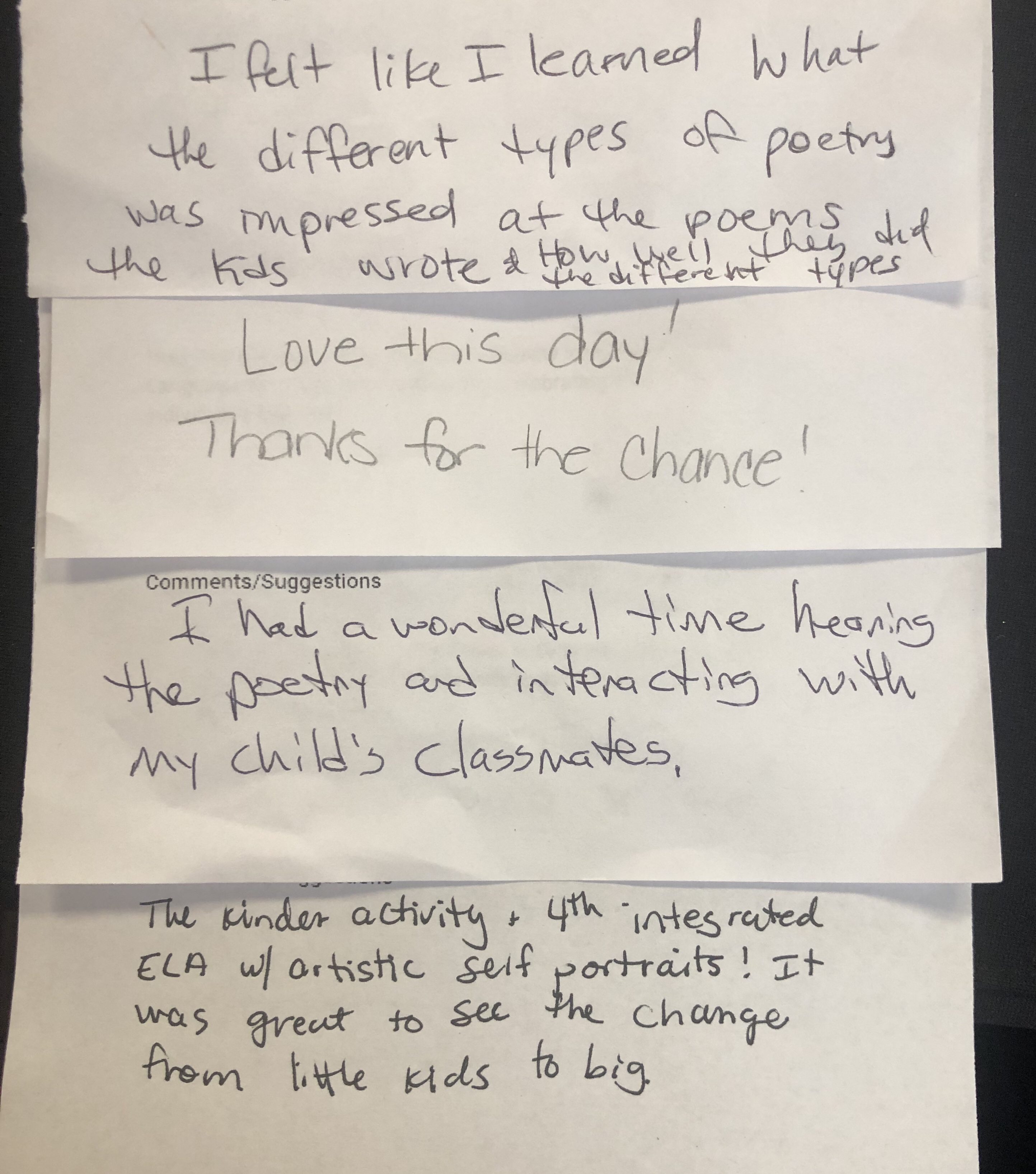
A few notes of feedback from parents
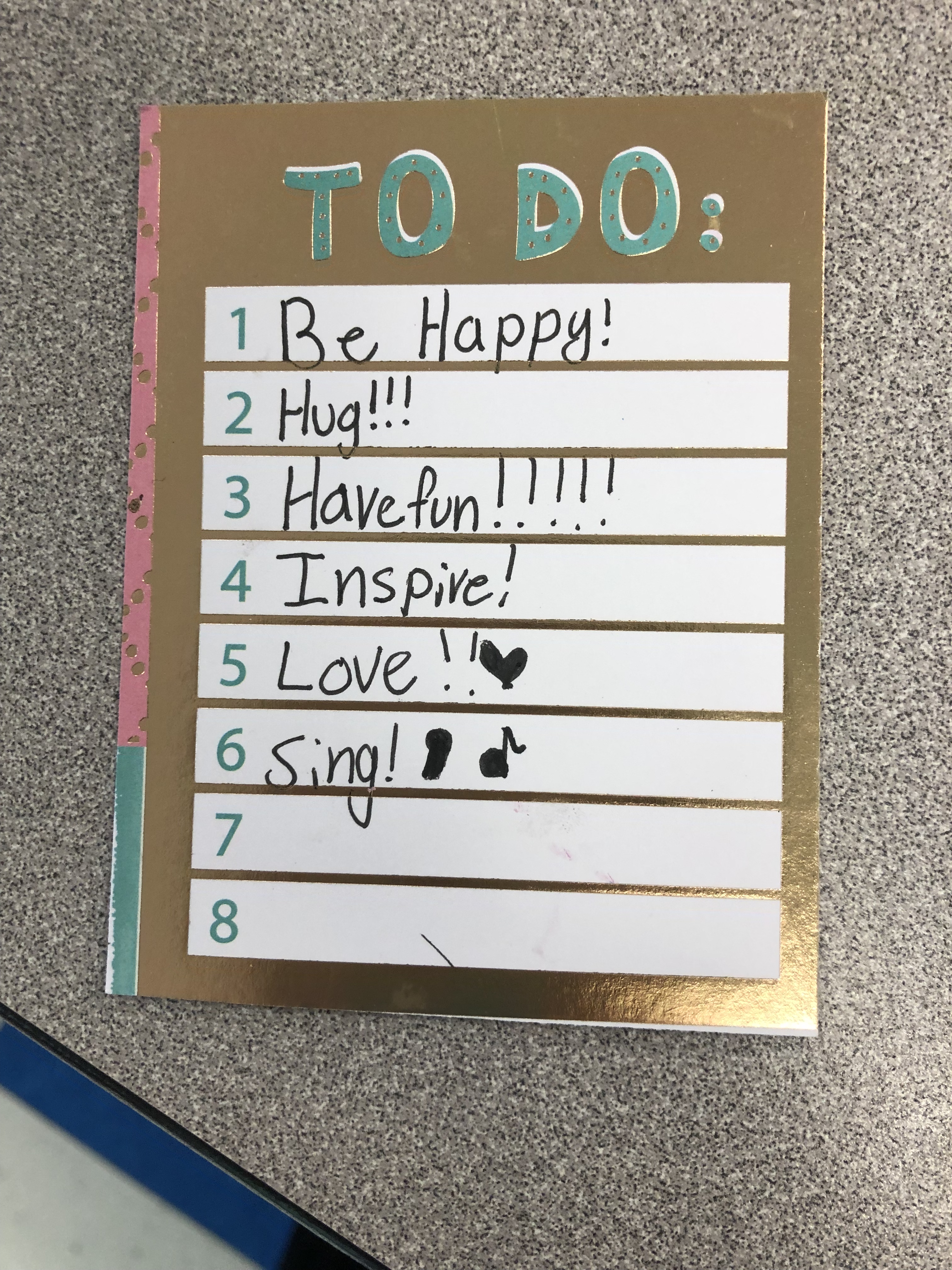
They came. They celebrated. Another Literacy Lunch has drawn to its close – this seemed to be the best note on which to end.
Many thanks to my colleagues for this annual collaborative effort.
To our families: THANK YOU for coming, for sharing, for being a vital part of the story we live each day. Be happy. Hug. Have fun. Inspire. Love. Sing.
And thank you, Two Writing Teachers, for the ever-flowing wellspring of inspiration, from which I drew the idea for this year’s theme.
My cup runneth over.





















